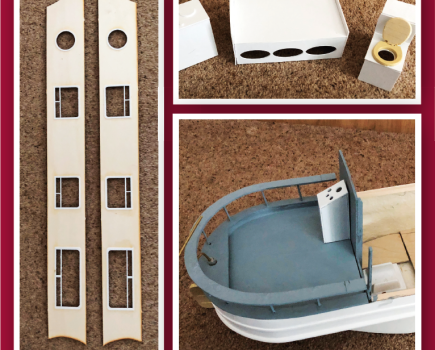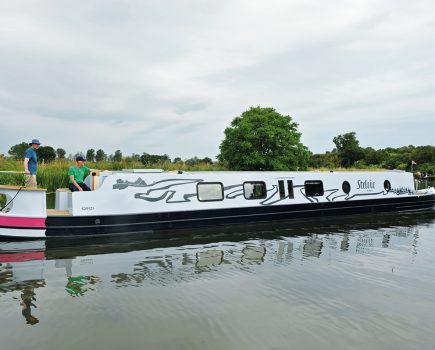Narrated by Liz McIvor this six-part series has been an incredible insight into our nation’s canal network. People tend to forget just how influential and important the canals were for Britain. This series shines some light on the often overlooked aspects of canals – the people who built it, funded it and even those who worked on it.
In the first episode the focus is on those who were given the task of creating a landscape of canals around the Pennines. There were an abundance of interesting things that were talked about throughout the episode – but here are 7 that you might find particularly interesting.
Limestone: Despite it eventually being a huge centre for industry, one of the driving forces in creating the Leeds, Liverpool Canal was for the transportation of limestone. Bradford merchants wanted to increase the supply of limestone to increase the production of lime, which was used as a fertiliser in agriculture. Clearly the merchants had no idea how successful the canal had the potential of becoming.
‘Puddling’: This is both the material and process of lining a canal with puddle clay. It was a technique pioneered by Brindley on the Bridgewater Canal and used when attempting to keep the Leeds Liverpool Canal watertight on permeable ground. Once laid down, the clay was compacted by driving cattle across the area, genius!
‘Legging’: In an effort to save on time and money, a tow path was not constructed for Standedge Tunnel. As canal boats were horse drawn – the boats had to be legged through the tunnel. This amazing technique involved boaters laying on boards on top of their boats and literally pushing against the walls of the tunnel with their legs. The Standedge Tunnel is nearly three miles long and as a result “professional” leggers were employed to take the boats through for one Shilling and six Pence a time. It would take roughly an hour and twenty minutes, but even longer depending on how heavy the load being carried by the boat was. What an incredible physical feat!
Standedge Tunnel: The construction of the Standedge Tunnel was, for lack of a better word, a nightmare. It was plagued by delays, floods and inexperienced engineering. After failing to meet various deadlines and catastrophic overspending, consulting engineer Benjamin Outram abandoned the project. Six years later, civil engineer and architect Thomas Telford was brought in to give advice on finishing the tunnel. A project that was originally meant to take just five years ended up taking seventeen!
Black Powder: When Outram started work at Standedge Tunnel he had no idea what type of rock he’d be working with. His workers were able to cut through the shale of the hill with little difficulty but eventually encountered an ancient fault that had thrown up much harder gritstone into their path. Because of this, they were forced to hack with picks and blast using Black Powder. Black Powder was incredibly dangerous, low explosive power and unpredictable, this was 75 years before dynamite would be invented and long fuses were not available. Workers had to burn goose quills as a delay to allow them time to get clear of the blast, this often didn’t work and it is believed that nearly 50 men were killed during the construction.
Success: After the Leeds Liverpool Canal was completed, it took only 25 years for it to pay off its debt from being built. An amazing achievement considering it took nearly twice that to be constructed. Within 50 years of its competition the population of Leeds had trebled due to the business and work generated by the canal. They really did help to make the nation great.
The Institution of Civil Engineering: Building the canal led to new scientific understanding about engineering, construction and materials. There was no longer a place for trial and error; projects now needed supervision with detailed planning for cost and design. Two years after the canal was completed the Institution of Civil Engineering was formed allowing engineers to share and learn from each others work. A process that was started because of the canal network went on to greatly benefit and shape the future of the rail and road networks.
You can watch the first episode of Canals: The Making of a Nation here, but hurry, it won’t be available for long!







